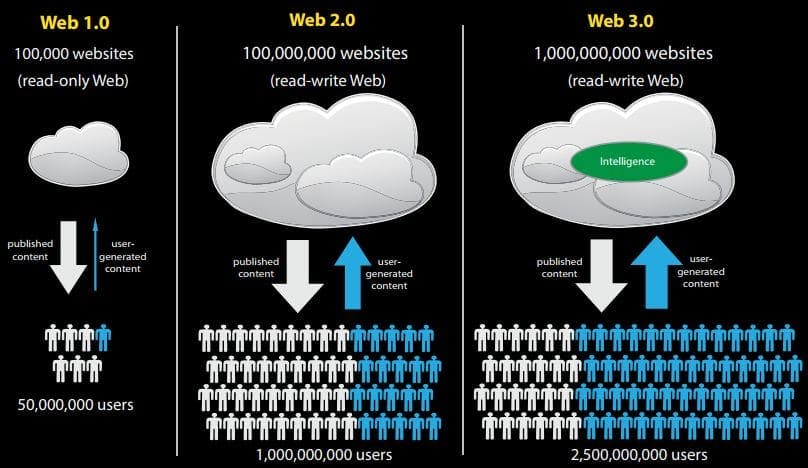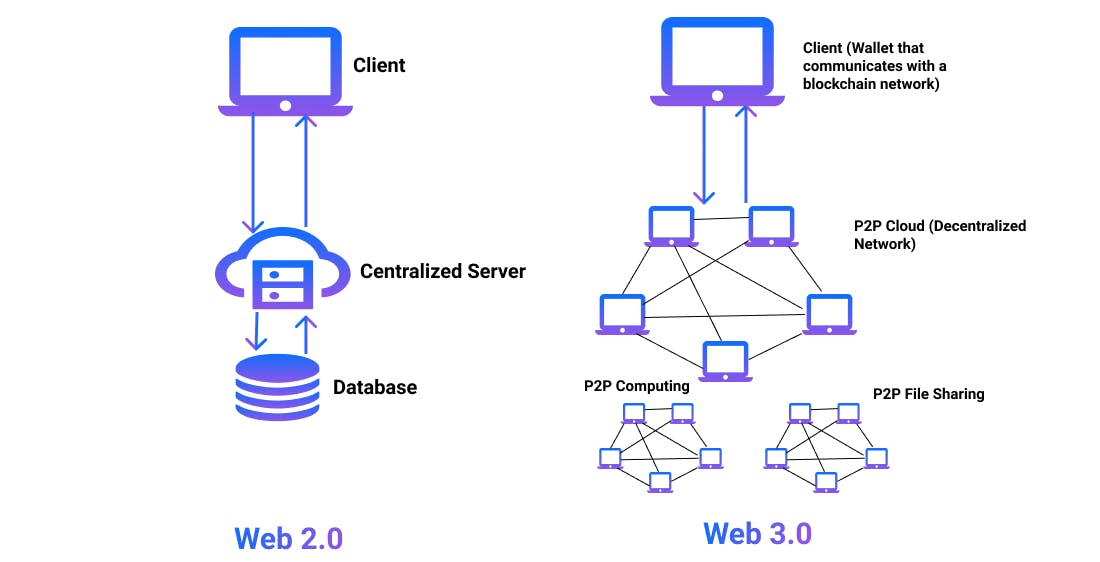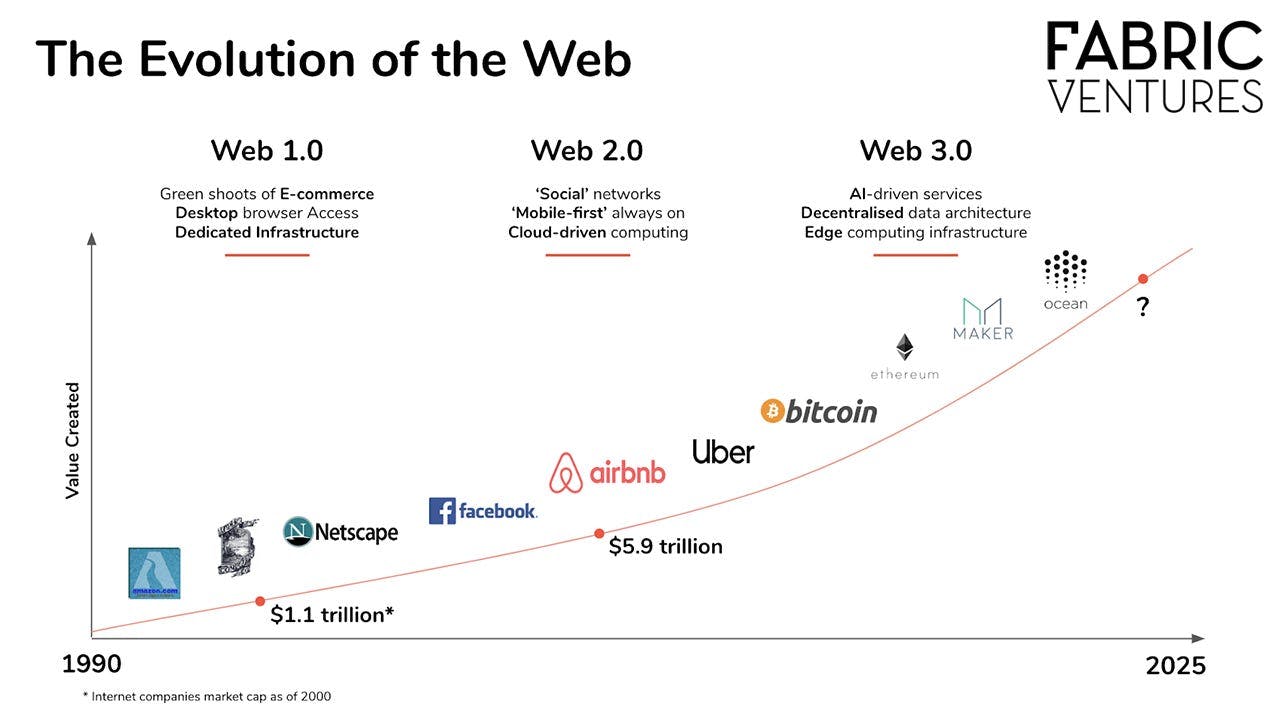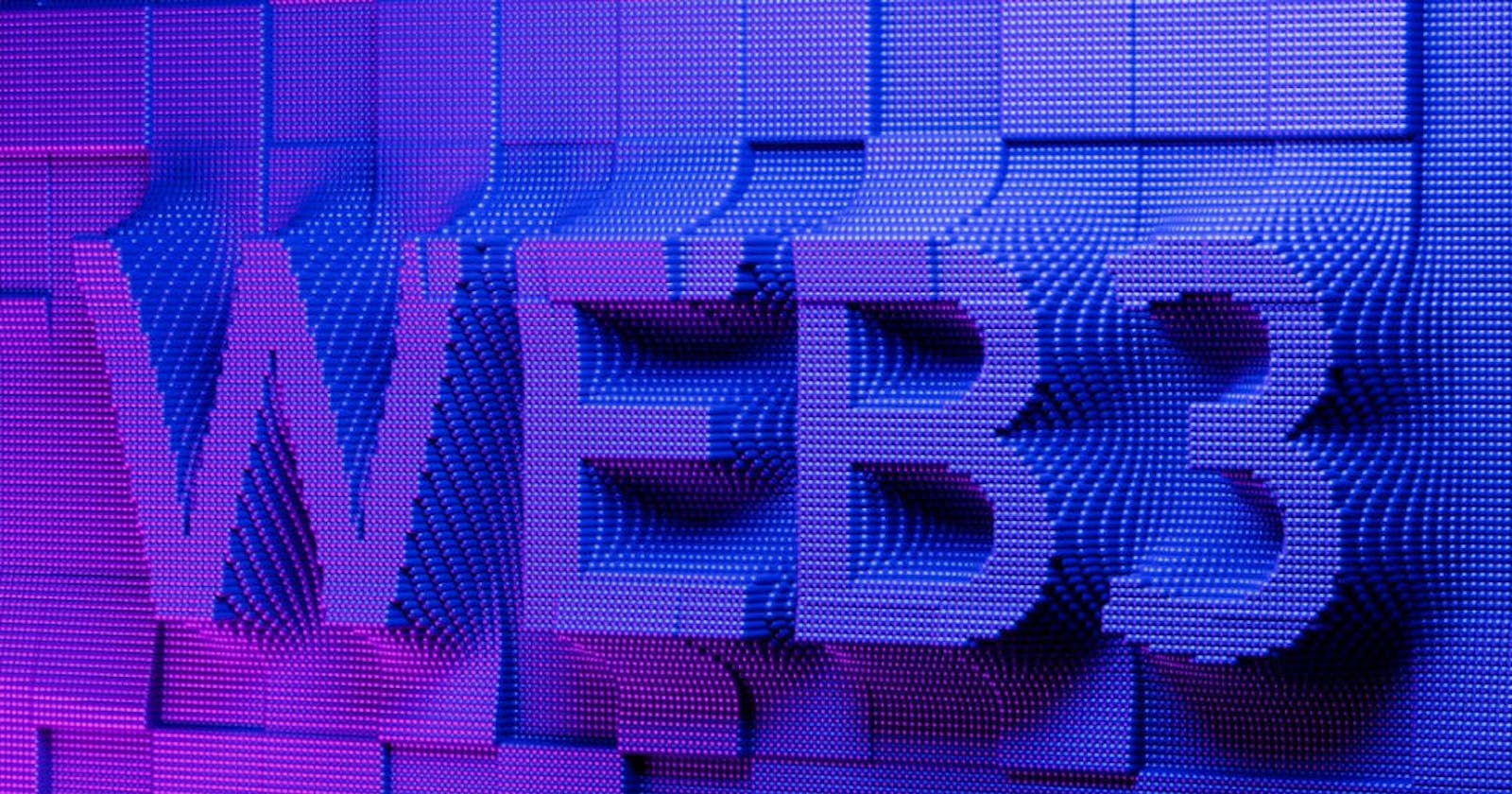The web is one of the most remarkable inventions of our time, but it is still evolving. A decade ago, the web looked very different from today. And it will change again with Web 3.0, the next wave of web innovation that will transform how web developers build websites. To appreciate what Web3 offers us, we need to look back at history and see how the web has changed over time.
Web 1.0 & Web 2.0
The introduction of Web 1.0 and Web 2.0 brought about significant changes in web technology. Web 1.0 was a read-only web, where content creators were fewer than content users. It mainly featured static HTML pages delivering data and information in the form of text and images. The introduction of Web 2.0 revolutionized the internet, making it interactive and social, with platforms like Facebook and YouTube being prime examples. However, there are concerns about the exploitation and centralization of user data. While these concerns exist, it is important to harness the advancements brought about by Web 2.0 while being mindful of potential risks.
What is Web 3.0?
Web 3.0 or Web3 is the new way of using the internet. It's different because it's not just people using websites and software, but also those things talking to each other and working together. Instead of being stored in one place, Web3 apps are spread out across lots of different places called blockchains. These apps are called decentralized apps or dapps for short. They're special because they're not controlled by one company or person, but by lots of people who work together to make sure everything is fair and secure.

What makes Web 3.0 different from the previous versions?

The introduction of web1 in the late 1990s was a massive success, grossing around $1 trillion in the industry. But the digital world has come a long way since then, and values have skyrocketed! In just fifteen years, the industry grew to approximately $5.9 trillion - that's six times the original value! This growth can be attributed to the shift from desktop browsers to mobile-first applications and cloud-driven technologies, which web2 embraced. The future is even more exciting, with web 3.0 focusing on cutting-edge technologies like Artificial Intelligence, decentralized data architecture, and edge computing infrastructure. These innovations make web3 different and more futuristic than its older versions, promising even greater things to come.
Why should we move to Web 3.0?

Get ready to be blown away by the power of Web3! It's all about trust and transparency, thanks to platforms that no single entity controls. These networks rely on consensus protocols, meaning that everyone follows the same set of rules, making them incredibly reliable. And the best part? You don't have to give up your sensitive information to use it!
While it's not quite the Semantic Web that Berners-Lee had envisioned, Web3 is a new and improved version of his original concept. There's no central controlling hub, and no one has to ask for permission to post anything. Instead, data is stored in blocks that are connected together, forming a secure and tamper-proof blockchain network. As more blocks are added, the data becomes even more secure, creating a level of transparency and security that Web 2.0 could only dream of.
With advances like distributed records and blockchain storage, Web3 will change the game by enabling data decentralization and creating a transparent and secure environment. This will put an end to Web 2.0's centralization, surveillance, and sneaky advertising practices. Plus, decentralized infrastructure and application platforms will replace the tech giants, giving people back control of their own data. Are you excited yet?
Challenges and future of Web 3.0

Get excited because Web 3.0 is coming! This new generation of the internet is all about secure, trustworthy, and powerful data transfer. The best part? It doesn't require any permission or trust from a central authority. But, for this amazing technology to reach its full potential, we need more people to start developing and using dapps. Sure, some folks may not be tech-savvy, but we can make it easy for everyone to get on board by creating simple dapps that anyone can use. As technology continues to advance, we might see the internet shift from Web 2.0 to Web 3.0 in just a few years! So, let's get ready for the future and embrace the incredible possibilities of Web 3.0.
